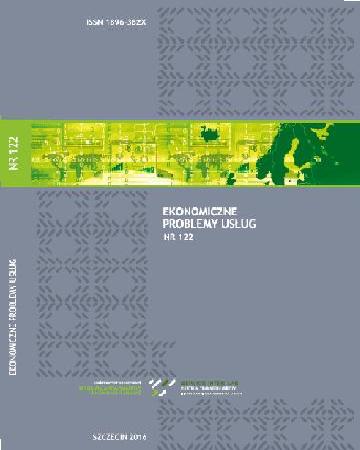
ISSN: 1896-382X
eISSN: 2353-2866
OAI
DOI: 10.18276/epu.2016.122-05



Lista wydań /
nr 122 2016
Pełna cyfryzacja sektora gospodarki i jej możliwe konsekwencje – przykład mediów
| Autorzy: |
Bohdan
Jung
Szkoła Główna Handlowa |
| Słowa kluczowe: | gospodarka cyfrowa media społecznościowe prosumpcja Web 2.0 cyfryzacja |
| Data publikacji całości: | 2016 |
| Liczba stron: | 16 (43-58) |
Abstrakt
Artykuł jest próbą odniesienia cech uznanych przez Dona Tapscotta (2015) za atrybuty gospodarki cyfrowej do realiów mediów pierwszej dekady XXI wieku i wskazania na skalę przewrotu, jaki dokonał się w tej branży pod wpływem cyfryzacji, co może być zapowiedzią skali i głębokości zmian w całej gospodarce.
Pobierz plik
Plik artykułu
Bibliografia
| 1. | Anderson Ch. (2006), The Long Tail. Why the Future of Business is Selling Less of More, Hyperion, |
| 2. | Ang I., (1996), Living Room Wars: Rethinking Media Audiences, Routledge, Oxford. |
| 3. | Cheal D. (1988), The Gift Economy, Routledge, London. |
| 4. | Davenport T.H., Beck J.C. (2001), The Attention Economy: Understanding the New Currency of Business, Harvard Business School Press. |
| 5. | Florida R. (2005), The Flight of the Creative Class. The New Global Competition for Talent, Harper Business/Harper-Collins Publishers, New York. |
| 6. | Florida R. (2002), The Rise of the Creative Class… and how it’s transforming work, leisure, community and everyday life, Basic Books, Perseus Book Group, New York. |
| 7. | Herman E.S., McChesney R.W. (1997), The Global Media. The New Missionaries of Global Capitalism, Cassel, London, Washington. |
| 8. | Giesler M. (2006), Consumer Gift System, „Journal of Consumer Research”, Vol. 33. |
| 9. | Goldhaber M.H. (1997), The Attention Economy and the Net, Conference of digital information. |
| 10. | Ingram M. (2015), The attention economy and the implosion of traditional media, „Forbes”, August 12. |
| 11. | Mauss M. (2001), Socjologia i antropologia: Szkic o darze. Forma i podstawa wymia-ny w społeczeństwach archaicznych, Wydawnictwo KR, Warszawa. |
| 12. | McQuail D., Siune K. (1998), Media Policy. Convergence, Concentration and Com-merce, Sage Publications, London, Thousand Oaks, New Delhi. |
| 13. | Meeker M., Internet Trends 2015, http://www.slideshare.net/kleinerperkins/ |
| 14. | internet-trends-v1 [dostęp 14.01.2016]. |
| 15. | Pine J., Gilmore J. (1999), The Experience Economy: Work is Theatre and Every Busi-ness is a Stage, Harvard Business School Press, Boston. |
| 16. | Prensky M. (2001), Digital Natives, Digital Immigrants, NCB University Press, Vol. 9, No. 5, October. |
| 17. | Rifkin J. (2000), The Age of Access. How the shift from ownership to access is trans-forming modern life, Penguin Books, London. |
| 18. | Sahlins M. (1972), Stone Age Economics, Routledge, London, New York. |
| 19. | Stebbins R. (1996), Casual and Serious Leisure and Post-traditional thought in the information age, World Leisure and Recreation, No. 3, Vol. 38. |
| 20. | Tapscott D. (2009), Grown up Digital: How the Net Generation is Changing Your World, McGraw-Hill, New York. |
| 21. | Tapscott D. (2015), The Digital Economy. Rethinking Promise and Peril in the Age of Networked Intelligence, Mc Graw Hill Education, New York – London – Sydney. |
| 22. | Tapscott D., Williams A.D. (2006), Wikinomics. How Mass Collaboration Changes Everything, Portfolio, Penguin Group, New York. |
| 23. | Toffler A. (1970), The Future Shock, Bodley Head, London. |
| 24. | Toffler A. (1980), The Third Wave, William Morrow and Co., New York. |
| 25. | Zorska A. (2011), Chaos czy twórcza destrukcja. Ku nowym modelom w gospodarce i polityce, Oficyna Wydawnicza SGH, Warszawa. |
| 26. | Zorska A., Molęda-Zdziech M., Jung B. (2014), Kreatywność i innowacyjność w erze cyfrowej. Twórcza destrukcja 2, Oficyna Wydawnicza SGH, Warszawa. |